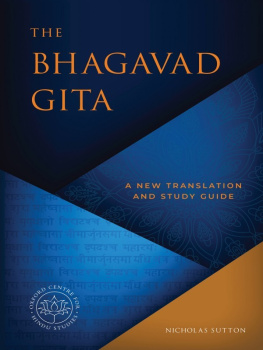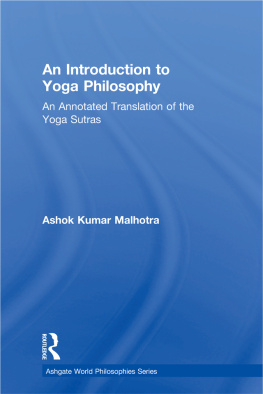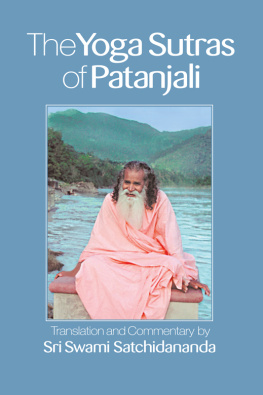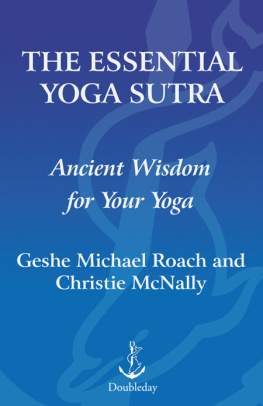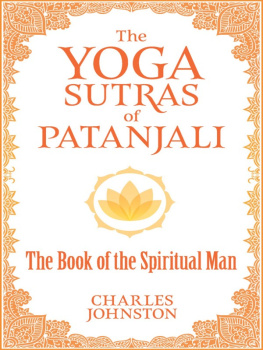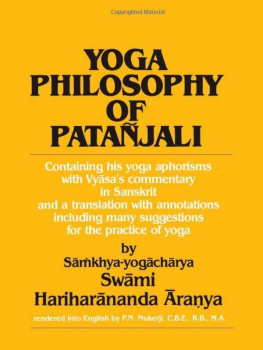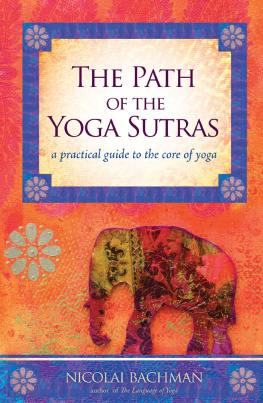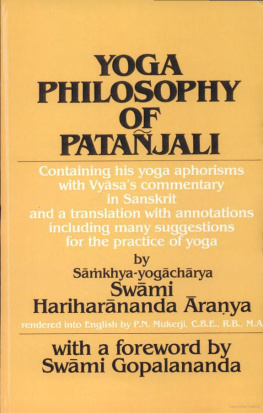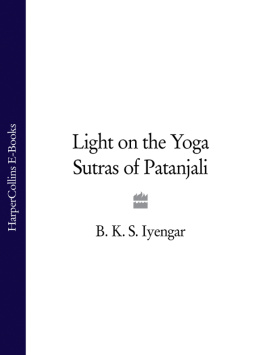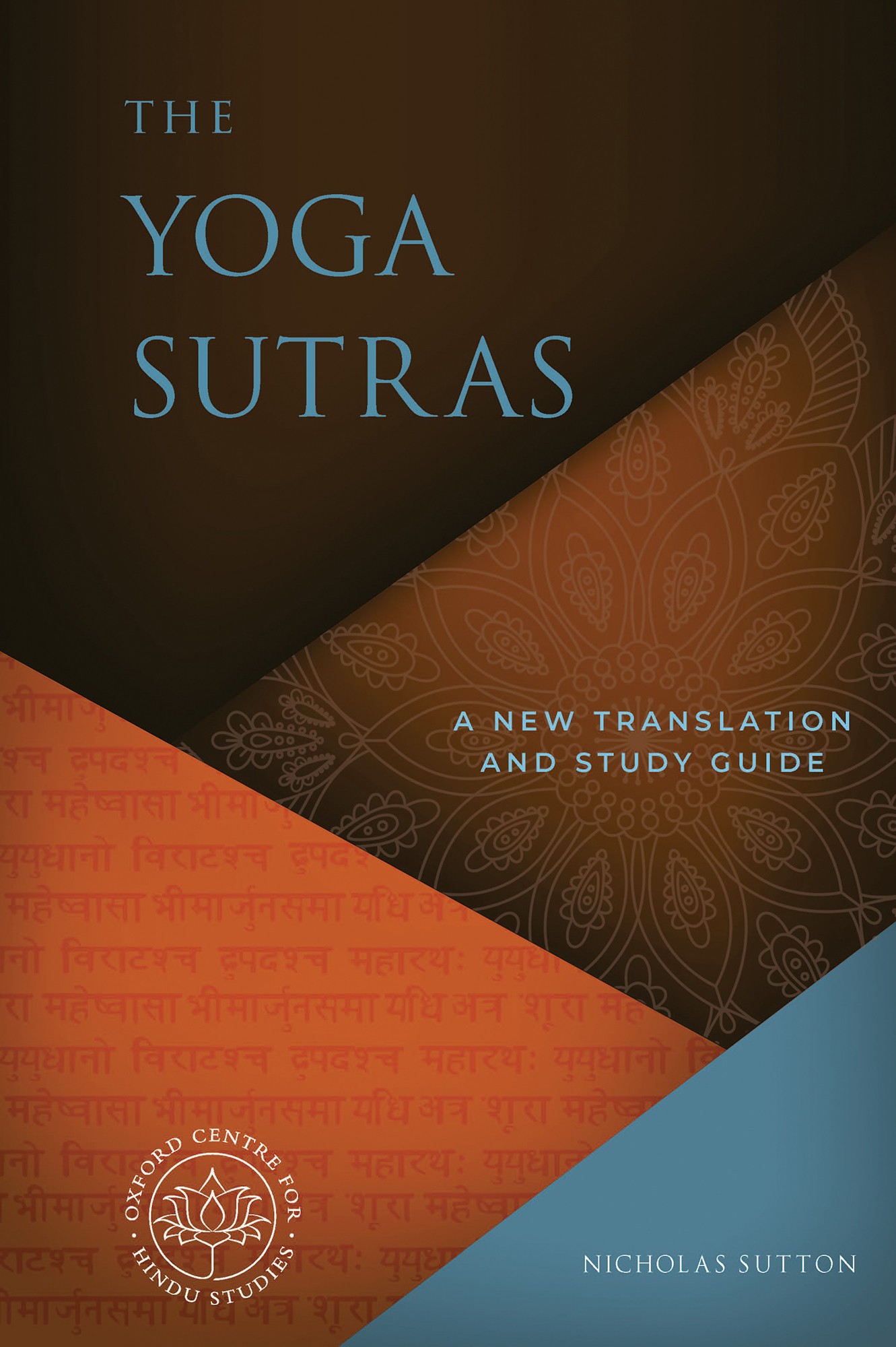Contents
Guide
INTRODUCTION
T his short book provides a detailed consideration of what is perhaps the best known, but least well understood, of all the texts of Indian philosophy, the Yoga Sutras of Patajali. This is not a particularly easy text to study, nor one where the meaning can be easily understood. The Yoga Sutras exists within the context of early Indian philosophy, which is in itself a highly complex and at times obscure area of study, and the comprehension of its principal tenets becomes even more problematic without some knowledge of that wider context.
I would certainly not try to discourage anyone from taking up such a study, however, and I do believe that an understanding of Patajalis work at any level is a prerequisite for acquiring a proper insight into the philosophy of Yoga. I do feel, however, that too much is written and said about the Yoga Sutras that is not based on a thorough reading of the text, and as a result tends to be misleading. Hence, in writing a study guide to the Yoga Sutras, one inevitably encounters a tension between on the one hand making the ideas accessible to as many readers as possible and, on the other, doing full justice to the complexity of the ideas encountered. Whether or not I have the balance right is for others to judge, but I do hope the reader will appreciate the difficulties involved in introducing this text as an area of study.
Taking a more positive note, I would certainly say that anyone who goes through this study guide will emerge both enriched and enlightened, and with a much deeper understanding of the Yoga tradition. That is not to say that I expect everyone to immediately understand every part of the Sutras, as that would be highly unlikely, merely that even a partial or imperfect comprehension will be of enormous benefit in gaining an understanding of the philosophy of Yoga.
D ATE AND A UTHORSHIP OF THE Y OGA S UTRAS
Although he does not name himself in the text, the identity of a certain Patajali as the author of the Yoga Sutras is well attested. Despite legends about his birth and identity, we can say little for certain about who he was or, indeed, about when he lived. According to popular accounts, Patajali is supposed to be a manifestation of the divine serpent Ananta who acts as the bed of Viu. Ananta appeared on earth to disseminate knowledge of Yoga and because he fell (pata) into the hands of his mother whilst they were formed into the position of prayer (anjali), he was given the name of Patajali.
In more historical terms, the debate over the dating of the text rests substantially on whether the author of the Yoga Sutras is to be identified as the grammarian named Patajali, who probably lived in the 2nd century BC. Indian traditions seem to take this identity for granted, but most modern scholars are more sceptical, and suggest that our Patajali probably lived some time in the 2nd or 3rd centuries AD. It is virtually impossible to be certain on this matter, but it does appear that the Yoga Sutras has an awareness of the Bhagavad-gita, and on this basis alone the later date is perhaps more likely. I would also tentatively suggest that the Yoga Sutras should be regarded as being later than the passages from the Mahabharata which focus on Yoga practice and the philosophy of Yoga.
T HE S TATUS OF THE Y OGA S UTRAS
Hindu religious thought recognises six daranas, or philosophical systems, as orthodox. These six, Vedanta, Mmsa, Vaiesika, Nyya, Samkhya, and Yoga, are declared to be orthodox, or stika, because they accept the Vedic revelation as authoritative. Those systems that do not accept the authority of the Veda are said to be na stika, or nstika, and are frequently condemned in Hindu texts; these would include Buddhists, Jains, and Ajivikas, as well as the more overtly atheist philosophies such as the Crvkas and Lokyatas. Each of the stika systems has a defining text, which purports to establish its fundamental principles. Most of these are written in the sutra style of pithy aphorisms, which generally require a commentary or verbal explanation for the full meaning to become clear; the Skhya Krik is the one exception to this rule.
With regard to the Yoga darana, Patajalis Yoga Sutras holds the position of being the seminal work that defines the system, and for this reason alone, it appears to have always been held in high regard; even today, when Yoga has progressed considerably from the teachings of Patajali, it is still usually referred to as the principal work on Yoga with authoritative status. Over the centuries, a number of important commentaries have been written which seek to explain and extrapolate the full meaning of the Sutras. The earliest of these commentaries is that of Vyasa, who is sometimes identified with the legendary author of the Mahabharata and compiler of the Veda, although this seems highly unlikely, and most scholars suggest a date some time between the 5th and 8th centuries AD. Other important writers on the Yoga Sutras include the great Vedntist, Vcaspati Mira (10th century), Bhoja, the philosopher king of Malwa in central India (11th century), and Vijanabhiku (16th century), who challenged akarcryas philosophy of Advaita Vedanta.
It would require a great deal of study to look in detail at the commentarial tradition, but the fact that these different works exist shows again the high regard in which the Yoga Sutras was held. In the modern era, that status has been maintained and possibly expanded, with contemporary teachers all emphasising the importance of Patajalis work, and new translations appearing with quite startling regularity. In the 1990s, Barbara Stoler Miller produced a new translation and commentary, which is highly recommended, in 2001, T.S. Rukmani provided a valuable edition that includes a translation of Vyasas commentary, and as recently as 2008, a new Penguin Classics edition appeared in which Shyam Ranganathan sought to demonstrate that Patajalis primary concern was with moral philosophy.
E NGLISH T RANSLATIONS OF THE Y OGA S UTRAS
One of the main problems confronting anyone seeking to get an insight into the teachings of the Yoga Sutras is that English translations vary so dramatically from one another, to the extent where it can be very difficult to properly determine exactly what Patajali does and does not say. There will, of course, always be differences in translations of any work, as different translators see different meanings, and in some cases bring their own preconceptions to bear. This is certainly true of some English editions of the Yoga Sutras, such as the Penguin Classics version, in which Shyam Ranganathan holds to a rather unusual reading. Beyond these issues, however, there are particular difficulties involved with Patajalis writing due to the highly technical vocabulary he employs, and the extremely dense sutra style adopted. It seems certain that this and other similar works were composed in sutras so that the meaning could be conveyed in the fewest words possible, and the whole of the text could be more easily committed to memory. In the Yoga Sutras, we find that virtually no verbs are employed, and it is left to the reader to fill in the implicit meaning, which is deemed to be self-evident. The problem is of course that to the modern reader the meaning is often by no means self-evident, and the teaching of particular passages is therefore rendered obscure.


